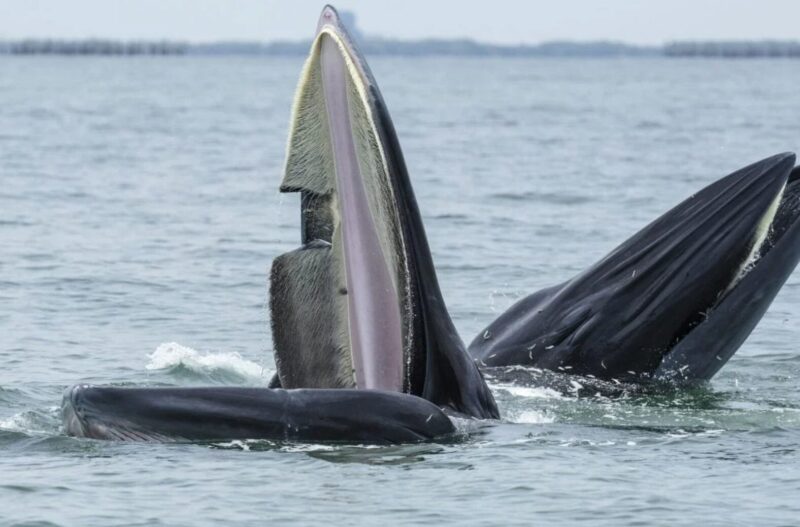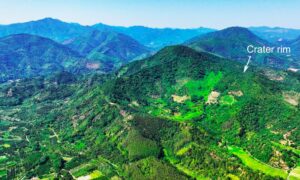Underwater surveys picked up mysterious “bio-twang” sounds from the Mariana Trench in 2014. A new study reveals where the sci-fi-esque noises are coming from.
The Mariana Trench lies in the Pacific Ocean, it is the deepest ocean trench on the planet. Stretching 2,400km, and at 10,935m deep, it is the focus of much deep-sea research.
Grumbling and metallic pings
The alien-like noises were first detected during an acoustic survey in 2014. The sounds last between 2.5 and 3.5 seconds and can be split into two distinct parts. The first is a deep grumbling noise, the second a series of high-pitched metallic pings.
“I think it sounds like the original ‘ping’ on the Starship Enterprise from Star Trek,” study co-author Lauren Harrell told Popular Science.
Researchers were baffled. It took two years before someone suggested that the noises might be the calls of a large baleen whale, such as a humpback or blue whale.
“It’s very distinct, with all these crazy parts. The low-frequency moaning part is typical of baleen whales, and it’s that kind of twangy sound that makes it unique. We don’t find many new baleen whale calls,” marine bioacoustician, Sharon Nieukirk commented at the time. It was not a whale call researchers had heard before.
This year, the National Oceanic and Atmospheric Administration (NOAA) reopened the case. It turns out that researchers in 2016 were close. The noises are coming from baleen whales, specifically the Bryde’s whale.

Bryde’s whale. Photo: Jirayu Tour Ekkul/WDC
Whale song
Researchers spotted 10 Bryde’s whales swimming near the Mariana Islands, west of the famous trench. Nine of the ten were recorded making the distinctive bio-twang noise.
“Once, it’s a coincidence. Twice is happenstance. Nine times, it’s definitely a Bryde’s whale,” lead author Ann Allen told Scientific American.
Despite the nine recorded calls, researchers wanted to make doubly sure they were correct. Using a new AI identification system the team trawled through 200,000 hours of ocean recordings from monitoring stations in the Mariana Archipelago.

Bryde’s whale. Photo: Jirayu Tour Ekkul/WDC
The AI tool sped through the recordings and turned them into images known as spectrograms. A machine learning algorithm could then differentiate between the various noises and pinpoint those that matched the bio-twang.
The study proved that these noises come from the Bryde’s whales. The noises are only heard in the northwest Pacific, showing that it is a particular population of whales. What the sounds mean remains a mystery.
“It’s possible that they use the bio-twang as a contact call, a sort of ‘Marco Polo’ of the ocean. But we need more information before we can say for sure,” Allen told Popular Science.






